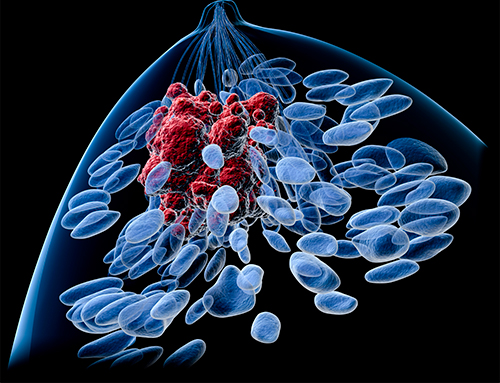Lemur tyrosine kinase 3 (LMTK3) is associated with cell proliferation and endocrine resistance in breast cancer. Now, a team of researchers from the University of Sussex has completed a five-year study that provides evidence for a potential new target for breast cancer treatment. It suggests that LMTK3 inhibitors could be effectively used for the treatment of breast cancer, and potentially other types of cancer.
Their five-year study, “The structure-function relationship of oncogenic LMTK3,” is published in Science Advances, involved researchers from seven institutions across three countries including the U.K.’s Diamond Light Source.
LMTK3 is a protein that has been shown to be an oncogenic regulator over the past few years. However, the lack of crystal structure has limited the understanding of LMTK3’s role and its interactions with other molecules.
“By solving the crystal structure of LMTK3, we have demonstrated that it possesses all of the hallmarks of an active protein kinase. LMTK3 plays a pivotal role in controlling cellular processes, and we have previously shown that active LMTK3 makes some cancer treatments (e.g., chemotherapy and endocrine therapies) less effective,” explained Georgios Giamas, professor of cancer cell signaling at the University of Sussex, who led the study.
“We are now in the process of taking this research to the next stage by developing LMTK3 specific drugs. We hope that in the next five years we will be undertaking clinical trials, which is incredibly quick for this type of process.”
Using a high-throughput homogeneous time-resolved fluorescence screen coupled with biochemical, cellular, and biophysical assays, the researchers identified a potent LMTK3 small-molecule inhibitor, C28.
“Functional and mechanistic studies reveal LMTK3 is a heat shock protein 90 (HSP90) client protein, requiring HSP90 for folding and stability, while C28 promotes proteasome-mediated degradation of LMTK3,” noted the researchers. “Pharmacologic inhibition of LMTK3 decreases proliferation of cancer cell lines in the NCI-60 panel, with a concomitant increase in apoptosis in breast cancer cells, recapitulating effects of LMTK3 gene silencing. Furthermore, LMTK3 inhibition reduces growth of xenograft and transgenic breast cancer mouse models without displaying systemic toxicity at effective doses. Our data reinforce LMTK3 as a druggable target for cancer therapy.
“It is often difficult to obtain large well diffracting crystals and LMTK3 was no exception. Through close collaboration between the OPPF and I24 and exploiting the microfocused X-ray beam at I24 to collect wedges of data from multiple crystals we were able to obtain diffraction data key to the study,” added Robin Owen, principal beamline scientist of MX beamline I24 at Diamond.
Their findings open a door of understanding in breast cancer and may lead to further therapies in other cancers.


